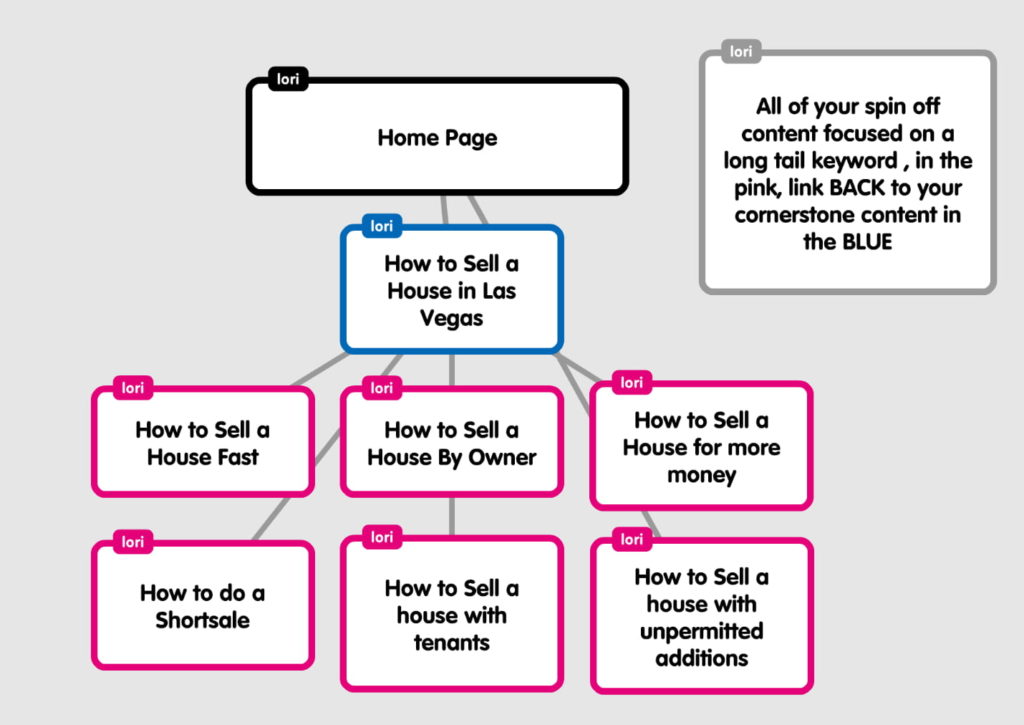Content marketing and cornerstone content go hand in hand. Content marketing is the leading marketing channel used by businesses of all sizes. Over 70% of companies invested in content marketing last year that shows its value. Content marketing doesn’t mean creating content and publishing it regularly rather it must be backed by a well-thought content marketing strategy so that you don’t end up worthless creating content for your blog.
Cornerstone content is one of the most essential components of your content marketing strategy. Not having cornerstone content pieces means you are wasting resources and have no clear direction. No business likes wasting resources, you shouldn’t either.
Let’s find out what is cornerstone content, why it is important, and how to create it.
What is Cornerstone Content?
Cornerstone content is the most important piece of content on your website or blog. It is the foundational content upon which other content pieces (that aren’t cornerstone) are built. It represents the content that you want to rank for and represents your business in the true sense.
Here is an example of cornerstone content from Moz. It has linked to its comprehensive SEO guide for beginners from its home page as it is a cornerstone content:
Since a cornerstone piece is the main content that you want to promote and rank for, it must be easily accessible. Visitors must be able to see it instantly as soon as they land on your website:

Yes, you can have multiple cornerstone content pieces depending on your niche.
Cornerstone content has a few characteristics that make it the best content on your website:

- It is the most important content piece on your website or blog
- It must be easily accessible preferably from the home page
- The cornerstone content must be long-form, highly informative, well-researched, and ideally, evergreen
- The piece must provide complete information to the readers and must answer all their queries.
You can have multiple cornerstone pieces on your website and it could be a blog post or a page. There aren’t any restrictions whatsoever.
It is also important to have a solid linking structure for your cornerstone content. All the other articles that are related to the cornerstone piece must link to it so as to improve its ranking in SERPs:
This structure will ensure that the cornerstone piece on your website gets all the link juice from relevant pages and posts on your website. Eventually, it’ll improve the ranking of the cornerstone content.
Cornerstone Content vs. Pillar Content
Pillar content or pillar page is used to refer to the main piece on a particular topic that is extremely in-depth and detailed. It covers the topic fully in all aspects. A pillar page is a long-form piece on a topic. Pillar pages are also linked from other relevant content pieces to boost its ranking:
Here is how HubSpot explains the linking structure of pillar pages and subtopics on any given website:
By definition, both cornerstone content and pillar content are the same. There isn’t much difference between the two and the terms are often used interchangeably.
Cornerstone Content Benefits
What makes pillar content so important? What’s so special about it?
There are several benefits of using cornerstone pieces that make it the best content marketing technique of all times:
- Ranks high in SERPs: Pillar pages are long-form content pieces that naturally rank high in SERPs as Google loves long-form content.
- Backlinks: According to Backlinko, long-form content gets 77% more backlinks than its counterparts. Why? Because people find long-form content useful and love it.
- User experience: When website visitors can find the best content easily and quickly, it improves UX across your website.
- Build authority: What happens when you write an awesome piece of content? It makes your readers WOW and they consider you an authority in your niche. Having multiple high-quality very in-depth pieces on your blog will eventually transform into an authority.
- Website structure: If you maintain the proper link structure, your website will have a clean structure that will make it super-easy for readers and search engine crawlers to scan and find relevant information.
- Repurposing opportunities: Long-form content provides you with several repurposing opportunities. You can convert it into multiple formats and resubmit it to reach a new target audience.
At the end of the day, pillar content helps you generate leads and sales. It is directly linked to revenue as it will drive more traffic leading to a high conversion rate which ultimately translates into an increase in revenue.
What’s better?
Tips to Creating Cornerstone Content
Creating a cornerstone piece for your blog requires some real hard work. You have to do a top-notch job here. The idea is to produce a 10x content piece that’s far better than all the existing content on the subject out there.
This type of content needs proper homework. Here are proven tips to create the best pillar content for your blog:
- Find and target the right keyword(s) for the cornerstone content. The target keyword must be the main keyword your business is targeting. Use a keyword research tool of your choice to find the right keywords for your piece.
- Use the 10x content technique or skyscraper technique to write the best piece on the topic that’s detailed, actionable, and in-depth. If it isn’t the best content on the subject, it isn’t pillar content. It has to be the best of the best content on the keyword.
- Add a link to your top cornerstone pages on the homepage so that visitors can click and read these awesome pieces.
- Manually outreach to websites and blogs that have linked to similar content and show them your article. This will help you acquire backlinks at no additional cost to your pillar pages. Since these are informative high-quality articles, people happily link to them and don’t hesitate to share it with their readers and followers.
Final Words
Cornerstone content offers your readers remarkable value. This is one reason why it delivers amazing results. Additionally, you’ll notice that creating and managing cornerstone pieces and maintaining a proper link structure keeps your blog organized.
If you haven’t developed any cornerstone pages yet, it is never too late. Get started now by converting your existing blog posts into pillar pages.
Featured Image: Unsplash






